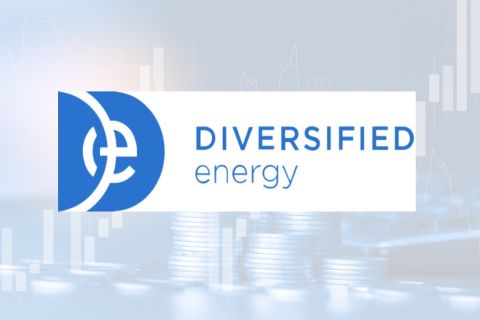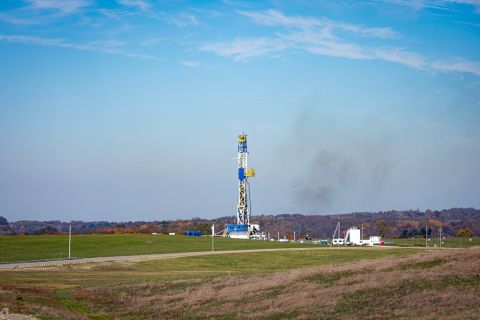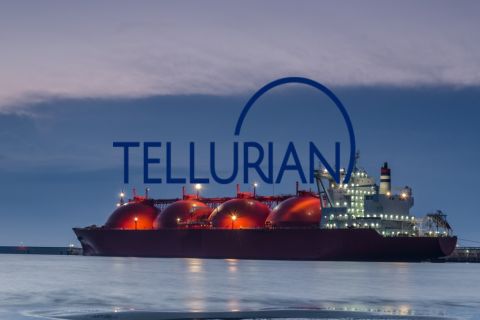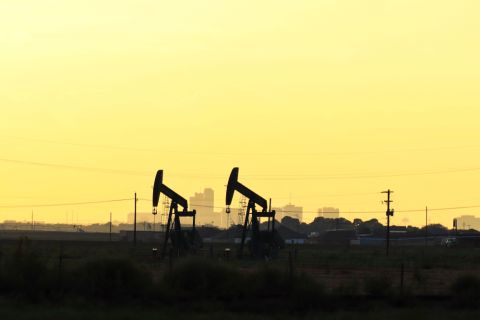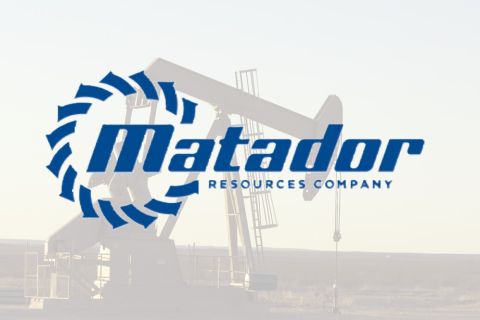Nissa Darbonne: Hi, I'm Nissa Darbonne, executive editor-at-large for Hart Energy. We're visiting with shalennial Toby Rice, president and CEO of EQT Corp., the nation's largest natural gas producer.
Toby, you just announced that you're curtailing production. I don't remember the amount of Bcf per day, but tell us more about that and for how long do you think you'll do this?
Toby Rice, president and CEO, EQT: Yeah, so we've announced a 1 Bcf per day curtailment that will be going on through March, and then we're going to reassess. And when you think about what's happening in the gas markets, we are just living in a very volatile world because natural gas demand in this country has grown 50% since 2010.
Pipeline infrastructure has only grown 25%, and storage infrastructure has only grown 10%. And so what that means is storage infrastructure is insufficient to balance the supply and demand and basically balance pricing. And that means pricing is going to drive supply and demand and help balance that.
And so you're going to see periods of time where gas prices get down to two bucks, like what we're seeing now.
And going to you see times where gas prices go significantly higher than that. And the really interesting part here is you're going to see operators be a lot more responsive to the commodity price environment. And we think this is just going to be a tool that we have to use in the future.
ND: Wait, you mentioned demand too. We're familiar with how an AI chip computes 30 times ... faster than a typical CPU chip, but I learned yesterday that an AI chip also consumes 30 times more energy in doing its job. That's a lot of electricity and we need the gas for that, right?
TR: Yeah, and this has certainly been a lot of buzz at CERAWeek [by S&P Global]. I talked about this on CNBC ... last week about the impact of AI and how big this could be. Everybody's really excited about LNG and that certainly is a really exciting emerging market for natural gas.
But now people are looking at the next exciting emerging market, which is power demand for these AI data centers. And when you think about one of these chips will consume about as much electricity as a Tesla, and you look at companies like NVIDIA that are putting 2 million of these [out into] the world each year, and that's growing to 8 million chips in this world every year. You put all that together, you realize that the power demand for AI could exceed the power demand for residential in this country. By 2030, that would be a 20% increase in electricity demand.
And to translate that back to natural gas, that could be the equivalent of an incremental 16 Bcf a day of natural gas demand. And that is equivalent to what we're doing today from an LNG.
So it's been a really exciting story and these numbers can be kind of unbelievable, but when you look at the people that really understand this, the people in tech look at some of the things that they're doing.
And did you notice who Mark Zuckerberg just added to his board last month? ... He added a guy named John Arnold. And while John Arnold is not a household name for this country, in our industry, he is the goat of energy trading.
And the fact that tech is making moves to bringing energy expertise into their organizations is an anecdotal signal that this thing could be big.
ND: Well, thanks for the tip on John Arnold. I certainly did overlook that.
In terms of another 16 Bcf/d of natural gas demand for electric power generation, Appalachian gas certainly has the potential to add 16 Bcf a day, but it's stranded, if you will.
Meanwhile, I understand [Appalachia's power-grid operator] PJM is kind of concerned right now about their ability to produce dispatchable energy. [If] greater in-basin use [of natgas for powering AI data] centers ... but can PJM supply them? Can the U.S. grid supply this?
TR: Yeah, when you see these emerging markets, you should be asking yourself, is it an investor who's going to benefit? While Gulf Coast is certainly has access to LNG. Appalachia, we have access to AI because all of these data centers that are going to be built in an area that is called Data Center Valley.
And that is going to be around Virginia and Appalachia.
With Mountain Valley Pipeline [MVP], we now can connect our low-cost, clean, reliable natural gas where we have decades and decades of inventory to Data Center Alley and ensure that we can support a really amazing technological revolution that's taking place with AI.
It's going to be powered by Appalachian gas.
ND: That's wonderful to hear. So ... how much Appalachian gas outside of existing production might be used in basin in future as a result of this?
TR: Well, we've done the work to support our Unleash U.S. LNG campaign on how big Appalachia could be. We have the productive capacity in Appalachia to increase production. An incremental 35 Bcf/d of natural gas is what we could produce and we could produce that with gas prices being less than $4 and sustain those levels for over 30 years.
That's a lot of energy we have.
So we have the capacity to service this. And when you think about what's unique about AI, this is tech-driven, which means tech moves at the speed of light and we may not have the time to wait seven or 10 years to get nuclear facilities built to support this growth.
The only energy source that has proven to meet rapid expansion and rapid demand is natural gas. And with our resource base being right next door, the Data Center Alley, and having MVP as the connection point, we are ready to service this demand.
ND: What is the status of still trying to get an LNG export plant near basin on the East Coast?
TR: It's certainly something that we're looking for. Obviously the most efficient thing we can do is build these LNG facilities next to the supply source. Having East Coast LNG facilities would be great and EQT would be ready to service that market.
But we're also going to be servicing all emerging markets. And whether it's LNG on the East coast or data centers, EQT is going to have really great proximity to some emerging markets and we think it's going to create some differentiated opportunities for our business.
ND: And then back to curtailment. In terms of U.S. natural gas in storage and working storage, what kind of metric are you more comfortable with or is it guided by simply what is strip for Henry Hub?
TR: Well, when you look at the supply-demand balance, most people are looking at storage levels and the amount of gas that's in inventory relative to those storage levels.
So because of this warm winter, we have about a 500 Bcf surplus in storage. And this is where the short-term curtailments that you're seeing from operators will help pull back some supply and allow the inventories to balance.
And then you're seeing activity levels as well. People are cutting their activity levels. And now that may not have a near-term impact on reducing supply [but] that will have a longer term impact of reducing supply.
And those supply cuts would show up in around 2025.
So ... the lower periods we have today, the more curtailments [and] lower activity levels will strengthen the setup for gas pricing in 2025 and the future.
And that's reflected in the strip where 2025 is a little ... higher, around $3.50. And let's just put this in perspective so that Americans understand: $3.50 natural gas is the energy equivalent of $20 oil. This is still the most affordable energy source in the world.
ND: And then I did want to jump back to AI and the amount of energy consumed in AI chips. That could kind of mean that our allies would need yet more natural gas from us if they were to have equivalent electricity at the ready for increased demand as a result of AI. Or will the U.S. eventually in time--because we have the natural gas--be the AI computing center [of the world]?
TR: AI is going to need access to cheap, reliable clean power, and America is the home for cheap, reliable, clean power.
So when technology companies are deciding where to put these data centers, we should be putting up a flag: "Come to the United States." Continue to reinvest in the technology industry because of all of the strengths that we've generated in the oil and gas industry.
Giving cheap, reliable, clean power is going to be the foundation on which an emerging technological revolution can take place. Let's build it here.
ND: I suppose without the shale revolution, America's computing centers would be in Qatar.
TR: Without the shale revolution, America would be in a very bad spot.
Let's not forget 20 years ago the situation America found itself in. We were energy dependent. We were an energy importer, and that put us in a very precarious situation.
But thanks to the shale revolution [and] thanks to this great workforce -- we have the brilliant minds -- the appropriate risk-taking, we've cracked the code on shale and transformed America from being an energy dependent nation to being an energy powerhouse.
Now it's our opportunity to share these benefits with the world, whether that's through unleashing U.S. LNG or unleashing AI and using our cheap, reliable, clean energy to power the next technological revolution--
ND: Super. Thank you.
TR: --All made possible because of the shale revolution. So we need to continue to lean in supporting American development because American energy industry is the strength of the American economy.
ND: Thank you, Toby. And thank you for joining us. Find out more here at hartenergy.com.
Recommended Reading
Diversified Energy Buys NatGas Assets in Runup to LNG Exports
2024-03-19 - Diversified Energy will pay $386 million to buy 100% interest in Oaktree Capital Management’s assets in Oklahoma, East Texas and Louisiana.
Ohio Oil, Appalachia Gas Plays Ripe for Consolidation
2024-04-09 - With buyers “starved” for top-tier natural gas assets, Appalachia could become a dealmaking hotspot in the coming years. Operators, analysts and investors are also closely watching what comes out of the ground in the Ohio Utica oil fairway.
Which Haynesville E&Ps Might Bid for Tellurian’s Upstream Assets?
2024-02-12 - As Haynesville E&Ps look to add scale and get ahead of growing LNG export capacity, Tellurian’s Louisiana assets are expected to fetch strong competition, according to Energy Advisors Group.
Dallas Fed Energy Survey: Permian Basin Breakeven Costs Moving Up
2024-03-28 - Breakeven costs in America’s hottest oil play continue to rise, but crude producers are still making money, according to the first-quarter Dallas Fed Energy Survey. The situation is more dire for natural gas producers.
Matador Bolts On Additional Interest from Advance Energy Partners
2024-02-27 - Matador Resources carved out additional mineral and royalty interests on the acreage it acquired from Advance Energy Partners for $1.6 billion last year.


